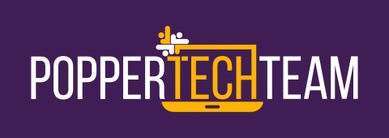Your Weakest Point Is Your Weakest User

Your Weakest Point Is Your Weakest User
In cybersecurity, the strongest firewall, most advanced encryption, and latest security software can all be undone by one careless click.
That’s why the harsh truth is this: your weakest point is your weakest user.
The Human Factor in Cybersecurity
While businesses invest heavily in IT infrastructure, many overlook the most exploited vulnerability—human behavior. Social engineering, phishing, and credential theft remain top attack methods because they target people, not machines.
According to Verizon’s Data Breach Investigations Report, over 80% of breaches involve the human element. This includes employees clicking on malicious links, using weak passwords, or unknowingly granting access to cybercriminals.
Real-World Impact
It only takes one person:
- Opening an infected attachment.
- Reusing a password across work and personal accounts.
- Approving an MFA prompt they didn’t initiate.
And just like that, attackers have a foothold into your network.
Strengthening Your Human Firewall
Here’s how to reduce user-based vulnerabilities:
1. Ongoing Security Awareness Training
Train your staff regularly—not just once a year. Make it engaging and scenario-based so users can recognize phishing, vishing, smishing, and pretexting in real life.
2. Simulated Phishing Campaigns
Test your users with fake phishing emails. Track who clicks, who reports, and who ignores. Then coach accordingly.
3. Multi-Factor Authentication (MFA)
Require MFA across all systems. It won’t stop all attacks, but it dramatically reduces the risk of compromised credentials being abused.
4. Access Control & Least Privilege
Employees should only have access to the systems and data they need. If a user account is compromised, limited access means limited damage.
5. Incident Response Training
Don’t just protect—prepare. Teach employees how to respond if they suspect they’ve made a mistake or see something suspicious.
Leadership Responsibility
Cybersecurity isn’t just IT’s job. It’s a business-wide priority. Leadership must foster a culture where security is everyone’s responsibility—not just an afterthought.
Final Thoughts
Your technology is only as strong as the people using it. Empower your employees with the tools, training, and awareness they need to become your first line of defense—not your biggest liability.
Because your weakest point should never be your weakest user.












